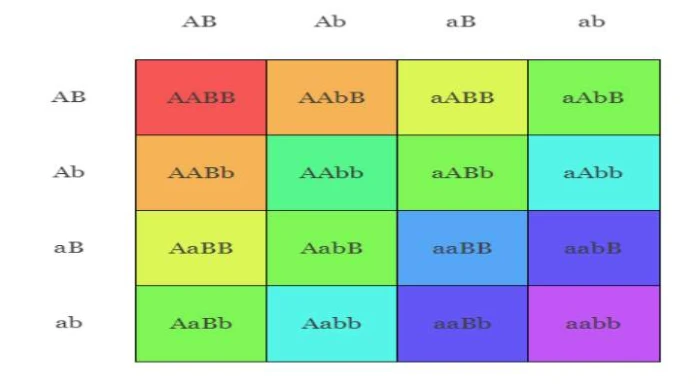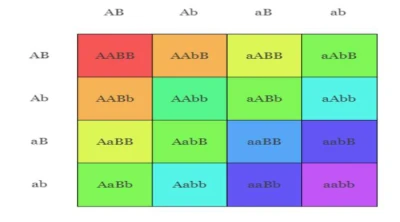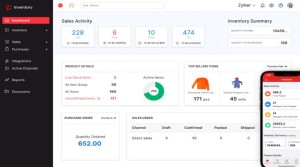Benefits of a Punnett Square Calculator
A flexible and potent tool that helps closes the gap between intricate genetic theories and real-world applications are the Punnett Square Calculator.

A Punnett Square Calculator is a helpful tool for anyone studying genes. It makes it easier to predict what traits a baby might get from its parents. This is useful for students learning about genes, teachers explaining genes, scientists doing research on genes, and even people who breed plants or animals.
Before delving into the benefits of a Punnett Square Calculator, it's essential to understand the basics of a Punnett Square. It is a grid system to predict offspring genotypes from a particular cross or breeding experiment. Each box in the grid represents a possible genotype, with the parents' alleles listed along the top and side of the square. By combining these alleles, one can determine the potential genetic outcomes.
Advantages and Benefits of Punnett Square Calculator
Efficiency and Speed
Manual construction of Punnett Squares, especially for more complex crosses involving multiple genes, can be time-consuming and prone to error. A Punnett Square Calculator automates this process, allowing users to input the parent genotypes and instantly receive the possible genetic combinations. This efficiency is particularly beneficial in educational settings and research where time is of the essence.
Complex Crosses
While simple monohybrid crosses (involving one gene) are straight-forward, dihybrid (two genes) and polyhydric (multiple genes) crosses can become incredibly complex. A Punnett Square Calculator can handle these complexities with ease, providing accurate predictions for even the most complicated genetic scenarios.
Educational Tool
In educational contexts, Punnett Square Calculators serve as an excellent teaching aid. They allow students to experiment with different genetic crosses and immediately see the outcomes, enhancing their understanding of genetic principles. Visual aids and interactive elements in these calculators can also make learning more engaging and effective.
Research Applications
In genetic research, predicting off-spring genotypes is a fundamental task. Researchers can use Punnett Square Calculators to quickly and accurately model genetic crosses, aiding in experiments involving plant and animal breeding, genetic engineering, and more. This capability can significantly accelerate research progress.
Accessibility
With online Punnett Square Calculators, students, educators, and researchers worldwide can access these tools from any device with an internet connection. This accessibility democratizes the study of genetics, making it easier for people in various educational and professional contexts to explore genetic concepts.
Visualization and Interpretation
Punnett Square Calculators often come with advanced features that help visualize genetic crosses. These tools can display results in various formats, such as color-coded grids, pie charts, and bar graphs, aiding in the interpretation of complex genetic data.
Here's an in-depth look at its benefits and overall utility of the Punnett Square Calculator.
Digital Punnett Squares
Using computers for Punnett Squares is faster and easier than drawing them by hand. This way, you will avoid accidentally making mistakes, making things quicker and more accurate. You tell the computer the parents' genes, and it figures out what the babies' genes could be.
Digital Punnett Squares are also suitable for trickier problems that would be too hard to do by hand. For example, a digital Punnett Square can still handle it easily if you're looking at two of your traits simultaneously. This is especially helpful for students and scientists who must solve many problems quickly and get the correct answers.
Punnett Square for Dummies
For those new to genetics, Punnett squares can be daunting. A Punnett Square Calculator is an excellent educational aid, simplifying the learning process. These calculators often come with user-friendly interfaces and guided instructions, making them accessible to beginners. They can explain the steps in creating a Punnett Square, the significance of dominant and recessive alleles, and how to interpret the results.
By providing instant feedback and visual representations, these tools help demystify the concepts behind Mendelian inheritance. This makes it easier for learners to grasp the fundamentals of genetics without feeling overwhelmed by the complexity of manual calculations.
Punnett Square Chart
A Punnett Square Calculator is a tool that creates charts showing the different traits babies might inherit. These charts help predict what kind of fur, eyes, or other features a baby plant or animal might have. They are like pictures that make it easier to understand genetics, the science of inheritance.
Calculators can make these charts on computers, and you can save them, print them out, or show them to others. Since they are pictures, they can help you learn and remember about genetics better.
Punnett Square Genotype
Understanding an organism's genotype is crucial in genetics. A Punnett Square Calculator helps accurately predict the genotypes of off-spring based on the parent's genetic makeup. This is instrumental in various fields, including agriculture, medicine, and breeding programs.
For instance, in agriculture, predicting the genotype of plants can help develop crops with desirable traits, such as disease resistance or improved yield. In medicine, genotype knowledge is helpful for both inherited illness prognosis and genetic counseling. Breeding programs for animals can also benefit from these predictions, ensuring the propagation of preferred traits.
Punnett Square for Baby
Prospective parents may use a Punnett Square Calculator to understand the potential genetic traits their baby might inherit. These can include physical characteristics such as eye color and hair type and the likelihood of inheriting certain genetic conditions.
Genetic counselors often use these tools to inform parents about the genetic risks and probabilities associated with their off-spring. This can assist parents in planning ahead for any health issues and making educated decisions. The simplicity and accuracy of digital Punnett Square Calculators make them an excellent resource for this purpose.
Types of Punnett Square Calculators
1. Basic Calculators
These are designed for simple monohybrid crosses, providing a straight-forward interface where users input the parents' genotypes and receive the off-spring's possible genotypes and phenotypes.
2. Advanced Calculators
These tools handle dihybrid and polyhydric crosses, allowing multiple genes to be input. They have features that can model incomplete dominance, co-dominance, and other genetic variations.
3. Educational Platforms
Some calculators are integrated into comprehensive educational platforms, offering tutorials, quizzes, and interactive lessons alongside the calculator tool. These platforms aim to provide a holistic learning experience.
4. Research Oriented Tools
These calculators are designed for professional use and offer advanced features like customizable genetic models, data export options, and integration with other bioinformatics tools.
A flexible and potent tool that helps closes the gap between intricate genetic theories and real-world applications are the Punnett Square Calculator. Its ability to simplify genetic predictions makes it indispensable in education, research, and breeding. By enhancing understanding, improving accuracy, and saving time, it supports many users, from students to professional geneticists. The Punnett Square Calculator is not just a computational tool; it is an educational bridge, a research assistant, and a vital component in genetic counseling and breeding programs. Its contributions to genetics underscore the importance of integrating technology with scientific exploration to achieve better, faster, and more accurate outcomes.
Also Read: Top Investment Strategies for Beginners

A Punnett Square Calculator is a helpful tool for anyone studying genes. It makes it easier to predict what traits a baby might get from its parents. This is useful for students learning about genes, teachers explaining genes, scientists doing research on genes, and even people who breed plants or animals.
Before delving into the benefits of a Punnett Square Calculator, it's essential to understand the basics of a Punnett Square. It is a grid system to predict offspring genotypes from a particular cross or breeding experiment. Each box in the grid represents a possible genotype, with the parents' alleles listed along the top and side of the square. By combining these alleles, one can determine the potential genetic outcomes.
Advantages and Benefits of Punnett Square Calculator
Efficiency and Speed
Manual construction of Punnett Squares, especially for more complex crosses involving multiple genes, can be time-consuming and prone to error. A Punnett Square Calculator automates this process, allowing users to input the parent genotypes and instantly receive the possible genetic combinations. This efficiency is particularly beneficial in educational settings and research where time is of the essence.
Complex Crosses
While simple monohybrid crosses (involving one gene) are straight-forward, dihybrid (two genes) and polyhydric (multiple genes) crosses can become incredibly complex. A Punnett Square Calculator can handle these complexities with ease, providing accurate predictions for even the most complicated genetic scenarios.
Educational Tool
In educational contexts, Punnett Square Calculators serve as an excellent teaching aid. They allow students to experiment with different genetic crosses and immediately see the outcomes, enhancing their understanding of genetic principles. Visual aids and interactive elements in these calculators can also make learning more engaging and effective.
Research Applications
In genetic research, predicting off-spring genotypes is a fundamental task. Researchers can use Punnett Square Calculators to quickly and accurately model genetic crosses, aiding in experiments involving plant and animal breeding, genetic engineering, and more. This capability can significantly accelerate research progress.
Accessibility
With online Punnett Square Calculators, students, educators, and researchers worldwide can access these tools from any device with an internet connection. This accessibility democratizes the study of genetics, making it easier for people in various educational and professional contexts to explore genetic concepts.
Visualization and Interpretation
Punnett Square Calculators often come with advanced features that help visualize genetic crosses. These tools can display results in various formats, such as color-coded grids, pie charts, and bar graphs, aiding in the interpretation of complex genetic data.
Here's an in-depth look at its benefits and overall utility of the Punnett Square Calculator.
Digital Punnett Squares
Using computers for Punnett Squares is faster and easier than drawing them by hand. This way, you will avoid accidentally making mistakes, making things quicker and more accurate. You tell the computer the parents' genes, and it figures out what the babies' genes could be.
Digital Punnett Squares are also suitable for trickier problems that would be too hard to do by hand. For example, a digital Punnett Square can still handle it easily if you're looking at two of your traits simultaneously. This is especially helpful for students and scientists who must solve many problems quickly and get the correct answers.
Punnett Square for Dummies
For those new to genetics, Punnett squares can be daunting. A Punnett Square Calculator is an excellent educational aid, simplifying the learning process. These calculators often come with user-friendly interfaces and guided instructions, making them accessible to beginners. They can explain the steps in creating a Punnett Square, the significance of dominant and recessive alleles, and how to interpret the results.
By providing instant feedback and visual representations, these tools help demystify the concepts behind Mendelian inheritance. This makes it easier for learners to grasp the fundamentals of genetics without feeling overwhelmed by the complexity of manual calculations.
Punnett Square Chart
A Punnett Square Calculator is a tool that creates charts showing the different traits babies might inherit. These charts help predict what kind of fur, eyes, or other features a baby plant or animal might have. They are like pictures that make it easier to understand genetics, the science of inheritance.
Calculators can make these charts on computers, and you can save them, print them out, or show them to others. Since they are pictures, they can help you learn and remember about genetics better.
Punnett Square Genotype
Understanding an organism's genotype is crucial in genetics. A Punnett Square Calculator helps accurately predict the genotypes of off-spring based on the parent's genetic makeup. This is instrumental in various fields, including agriculture, medicine, and breeding programs.
For instance, in agriculture, predicting the genotype of plants can help develop crops with desirable traits, such as disease resistance or improved yield. In medicine, genotype knowledge is helpful for both inherited illness prognosis and genetic counseling. Breeding programs for animals can also benefit from these predictions, ensuring the propagation of preferred traits.
Punnett Square for Baby
Prospective parents may use a Punnett Square Calculator to understand the potential genetic traits their baby might inherit. These can include physical characteristics such as eye color and hair type and the likelihood of inheriting certain genetic conditions.
Genetic counselors often use these tools to inform parents about the genetic risks and probabilities associated with their off-spring. This can assist parents in planning ahead for any health issues and making educated decisions. The simplicity and accuracy of digital Punnett Square Calculators make them an excellent resource for this purpose.
Types of Punnett Square Calculators
1. Basic Calculators
These are designed for simple monohybrid crosses, providing a straight-forward interface where users input the parents' genotypes and receive the off-spring's possible genotypes and phenotypes.
2. Advanced Calculators
These tools handle dihybrid and polyhydric crosses, allowing multiple genes to be input. They have features that can model incomplete dominance, co-dominance, and other genetic variations.
3. Educational Platforms
Some calculators are integrated into comprehensive educational platforms, offering tutorials, quizzes, and interactive lessons alongside the calculator tool. These platforms aim to provide a holistic learning experience.
4. Research Oriented Tools
These calculators are designed for professional use and offer advanced features like customizable genetic models, data export options, and integration with other bioinformatics tools.
A flexible and potent tool that helps closes the gap between intricate genetic theories and real-world applications are the Punnett Square Calculator. Its ability to simplify genetic predictions makes it indispensable in education, research, and breeding. By enhancing understanding, improving accuracy, and saving time, it supports many users, from students to professional geneticists. The Punnett Square Calculator is not just a computational tool; it is an educational bridge, a research assistant, and a vital component in genetic counseling and breeding programs. Its contributions to genetics underscore the importance of integrating technology with scientific exploration to achieve better, faster, and more accurate outcomes.
Also Read: Top Investment Strategies for Beginners
Conversation
Latest Blogs
© Blog CoolCalculator, Explore CoolCalculator, your destination for the latest insights, tips, and updates on the world of online calculators. Stay informed and make your calculations smarter with our blog. ,
Designed
by Saad Media Team , Team Lead M.Rizwan Akhtar












